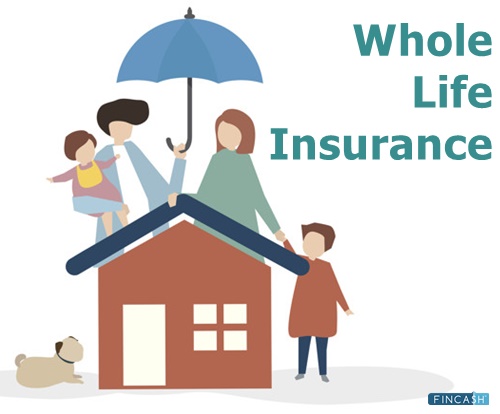Whole life insurance is a type of permanent life insurance that provides lifelong coverage, as long as you continue to pay premiums. Unlike term life insurance, which expires after a specific period (such as 10, 20, or 30 years), whole life insurance is designed to last your entire life, making it an appealing option for those looking for long-term financial security. In addition to providing a death benefit, whole life insurance also accumulates cash value over time, which you can borrow against or use as an investment.
This comprehensive guide explores everything you need to know about whole life insurance, including its benefits, costs, and factors to consider before purchasing a policy.

Table of Contents:
- What is Whole Life Insurance?
- How Does Whole Life Insurance Work?
- Key Benefits of Whole Life Insurance
- Drawbacks of Whole Life Insurance
- Whole Life Insurance vs. Term Life Insurance
- How Much Does Whole Life Insurance Cost?
- Who Should Consider Whole Life Insurance?
- How to Choose the Best Whole Life Insurance Policy
- Frequently Asked Questions (FAQs)
- Conclusion
1. What is Whole Life Insurance?
Whole life insurance is a type of permanent life insurance that provides two key features: a death benefit and a savings component known as cash value. As long as you pay your premiums, the policy remains in effect throughout your life. The death benefit is paid to your beneficiaries upon your death, and the cash value can accumulate over time, providing an additional financial resource during your lifetime.
2. How Does Whole Life Insurance Work?
Whole life insurance operates on a straightforward structure:
- Premium Payments: You pay a fixed premium every month, quarter, or year, typically for your entire life. The premiums are higher compared to term life insurance because whole life policies offer lifelong coverage and include an investment component (cash value).
- Cash Value: A portion of the premium goes toward building cash value. This value grows over time on a tax-deferred basis, meaning you don’t pay taxes on the accumulated cash value until you withdraw or borrow against it. The growth rate is typically guaranteed, meaning the insurer promises a minimum interest rate, though it may be higher if the company performs well.
- Death Benefit: The death benefit is the amount of money your beneficiaries receive when you pass away. This amount is generally guaranteed and does not fluctuate based on the cash value or investments.
- Loans and Withdrawals: You can borrow against the cash value of the policy at any time, and the loan amount is typically not subject to credit checks. The loan will accrue interest, and if not repaid, the loan balance will be deducted from the death benefit. Alternatively, you can withdraw the accumulated cash value, although this could reduce the death benefit.
3. Key Benefits of Whole Life Insurance
a. Lifetime Coverage
Unlike term life insurance, which only lasts for a specified period, whole life insurance guarantees coverage for your entire lifetime, as long as you keep up with premium payments.
b. Cash Value Accumulation
The policy builds cash value over time, which grows at a guaranteed interest rate. This cash value can be borrowed against or used as collateral for loans. It also provides a financial resource you can tap into in emergencies or for retirement.
c. Fixed Premiums
Whole life insurance has fixed premiums, meaning you’ll pay the same amount throughout your life. This makes it easier to budget for the policy over the long term. In contrast, premiums for term life policies can increase as you age or when the policy expires.
d. Dividends (for Some Policies)
Many whole life insurance policies pay dividends. While not guaranteed, these dividends can be used to reduce premiums, purchase additional coverage, or accumulate interest within the policy. This is typically offered by mutual insurance companies.
e. Tax Advantages
The cash value grows on a tax-deferred basis, meaning you won’t owe taxes on it until you withdraw or borrow against it. Additionally, the death benefit is usually paid out tax-free to your beneficiaries.
4. Drawbacks of Whole Life Insurance
a. High Premiums
One of the biggest drawbacks of whole life insurance is the cost. Premiums for whole life policies are significantly higher than term life insurance premiums because whole life policies provide lifetime coverage and accumulate cash value. This can make it an unaffordable option for some individuals.
b. Slow Cash Value Growth
While whole life policies accumulate cash value, it can take several years before the cash value builds up significantly. Early on, a large portion of your premiums goes toward administrative fees and the cost of insurance rather than the cash value.
c. Complexity
Whole life insurance policies can be more complex to understand compared to term life policies. The cash value component, dividends, and loan options require careful attention and understanding to manage effectively.
d. Potential for Low Returns
The returns on the cash value component of whole life insurance tend to be lower compared to other types of investments, such as stocks or bonds. While there is a guaranteed minimum interest rate, it may not keep pace with inflation or provide high growth.
5. Whole Life Insurance vs. Term Life Insurance
Whole Life Insurance
- Coverage: Permanent (for your entire life).
- Premiums: Higher and fixed.
- Cash Value: Yes, builds up over time.
- Loans/Withdrawals: Yes, against cash value.
- Flexibility: Less flexible with respect to coverage or premiums.
- Best for: Those who want permanent coverage and cash value accumulation for long-term financial security.
Term Life Insurance
- Coverage: Temporary (for a specified term, such as 10, 20, or 30 years).
- Premiums: Lower than whole life.
- Cash Value: No cash value or savings component.
- Loans/Withdrawals: No.
- Flexibility: More flexible in terms of length of coverage.
- Best for: Those who need affordable coverage for a specific period (e.g., until a mortgage is paid off or children are financially independent).
6. How Much Does Whole Life Insurance Cost?
The cost of whole life insurance varies widely depending on several factors, including:
- Age: The younger you are when you purchase whole life insurance, the lower your premiums will generally be. Premiums are higher for older individuals due to the increased risk to the insurer.
- Health: Insurers will assess your health to determine your risk level. A policyholder in good health will typically pay lower premiums than someone with a serious health condition.
- Coverage Amount: The more coverage you need, the higher your premiums will be. Policies with larger death benefits require larger premiums.
- Company: Different insurers have different pricing structures. Shopping around can help you find the best price for your coverage.
On average, a healthy 30-year-old male may pay anywhere from $300 to $800 per year for a $500,000 whole life insurance policy, while someone older or with a health condition may pay significantly more. Premiums increase with age, and individuals in their 50s or 60s can expect to pay much higher premiums.
7. Who Should Consider Whole Life Insurance?
Whole life insurance is ideal for individuals who need permanent coverage and are looking for a policy that builds cash value over time. It can be especially beneficial for the following groups:
- People with Long-Term Financial Goals: If you want to provide lifelong financial security for your loved ones or build a legacy, whole life insurance can help you achieve that.
- Parents or Grandparents: Whole life insurance can be used to provide for children or grandchildren's education or other financial needs after your death.
- High Net-Worth Individuals: Those with substantial assets might use whole life insurance as an estate planning tool to pass on wealth to heirs while minimizing estate taxes.
- Individuals Looking for a Forced Savings Plan: If you struggle to save money or need a financial safety net, the cash value of whole life insurance can serve as a forced savings plan that you can borrow against.
8. How to Choose the Best Whole Life Insurance Policy
When selecting a whole life insurance policy, it’s essential to consider the following factors:
- Financial Strength of the Insurer: Choose an insurance company with a strong financial rating to ensure they’ll be able to pay out claims when necessary. Look at ratings from agencies like A.M. Best, Standard & Poor’s, and Moody’s.
- Policy Features: Look for policies that offer flexibility, such as the ability to adjust premiums or death benefits. Pay attention to how the policy builds cash value and whether the insurer pays dividends.
- Premiums: Make sure you can afford the premiums over the long term. Premiums for whole life insurance can be expensive, so assess whether the policy fits within your budget.
- Riders: Consider adding riders, such as accelerated death benefit riders or waiver of premium riders, to customize your policy for your specific needs.
9. Frequently Asked Questions (FAQs)
Q: Can I convert my term life insurance to whole life insurance?
A: Some insurers allow you to convert a term life policy into a whole life policy during a certain period, usually within the first few years of the term. This option may be available without a medical exam.
Q: Is whole life insurance a good investment?
A: Whole life insurance can be a good investment for those seeking permanent coverage and who want to build cash value over time. However, the returns on the cash value may be lower than other types of investments like stocks or mutual funds.
Q: Can I cancel my whole life insurance policy?
A: Yes, you can cancel your whole life insurance policy at any time, but doing so may result in surrender charges, and you may lose any accumulated cash value unless you opt for a partial withdrawal or loan.
10. Conclusion
Whole life insurance offers lifelong coverage, cash value accumulation, and potential dividends, making it a great choice for those seeking permanent protection for their loved ones. However, it comes with higher premiums and may not be suitable for everyone. It’s essential to evaluate your financial goals, budget, and long-term needs before deciding whether whole life insurance is the right choice for you. By understanding how it works and comparing policies, you can make an informed decision that provides financial security for your family.






